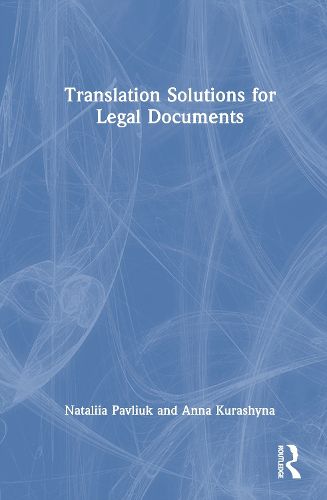Readings Newsletter
Become a Readings Member to make your shopping experience even easier.
Sign in or sign up for free!
You’re not far away from qualifying for FREE standard shipping within Australia
You’ve qualified for FREE standard shipping within Australia
The cart is loading…






The course book covers the legal translation themes by the types of legal documents. The three parts of the book are devoted to the translation of legislative documents, contracts, and court documentation. This textbook uses a new approach to train students of legal translation that can be used to teach translation from English to any other language. This approach combines legal and linguistic perspectives of the study of legal documents, includes machine translation and AI tools, and corpus methods. The course book instigates a profound understanding of the functions, structure and linguistic characteristics of document types. Examples of translation from English to Italian, German, Ukrainian, Polish, Arabic, Spanish and Chinese with analysis will help students compare different translations and suggest their own translation of the same examples into their target language. An e-resources website provides exercises to develop translation skills within the legal domain, focusing on developing students' research skills, their ability to substantiate the choice of terminology equivalents, identify translator's false friends, cope with the issues of syntax and morphology and apply various translation strategies and techniques. The exercises also include the comparative analysis of post-editing of machine translation and AI-generated translations with their own translations, also plus corpus-based exercises.
$9.00 standard shipping within Australia
FREE standard shipping within Australia for orders over $100.00
Express & International shipping calculated at checkout
The course book covers the legal translation themes by the types of legal documents. The three parts of the book are devoted to the translation of legislative documents, contracts, and court documentation. This textbook uses a new approach to train students of legal translation that can be used to teach translation from English to any other language. This approach combines legal and linguistic perspectives of the study of legal documents, includes machine translation and AI tools, and corpus methods. The course book instigates a profound understanding of the functions, structure and linguistic characteristics of document types. Examples of translation from English to Italian, German, Ukrainian, Polish, Arabic, Spanish and Chinese with analysis will help students compare different translations and suggest their own translation of the same examples into their target language. An e-resources website provides exercises to develop translation skills within the legal domain, focusing on developing students' research skills, their ability to substantiate the choice of terminology equivalents, identify translator's false friends, cope with the issues of syntax and morphology and apply various translation strategies and techniques. The exercises also include the comparative analysis of post-editing of machine translation and AI-generated translations with their own translations, also plus corpus-based exercises.